This article was co-authored by wikiHow Staff. Our trained team of editors and researchers validate articles for accuracy and comprehensiveness. wikiHow's Content Management Team carefully monitors the work from our editorial staff to ensure that each article is backed by trusted research and meets our high quality standards.
This article has been viewed 235,871 times.
Learn more...
Female urinals can be useful for women who are injured or bedridden at home or in the hospital and want an alternative to bedpans. Female urinals are also a great option for patients who have severe chronic pain and limited mobility due to illness or sickness.[1] Some women choose to use a female urination device because they do not want to have to come in contact with public washrooms or are often outdoors and do not have easy access to a bathroom. Before you use a female urinal you should identify the type of urinal that is best for your body and your needs, and choose a urinal that is lightweight and easy to clean.
Steps
Selecting the Female Urinal For You
-
1Use a hand-held device if you can sit or stand upright unassisted. This type of female is recommended for individuals who have limited mobility and can support themselves when sitting or standing. Hand-held devices are also useful if you would like the freedom to dispose of the urine without assistance and reuse the device easily. There are several different styles of hand-held urinals, including:[2]
- Jug shaped: This is a common style for female urinals, with a deep and open receptacle that is easy to urinate in. You can use them while standing or sitting.
- Bottle shaped: This is another common style that consists of a narrow, hollow chamber with an opening that is designed to fit the female anatomy. You can use bottle-shaped urinals when standing or sitting in a chair with your pelvis tilted slightly forward. Some brands of this style are also made use when lying down or on your side.
- Dish-shaped: This style has a flat base and is shallow, with a cover that surrounds the central opening of the urinal. You can insert this style under you when you are in bed or a chair.
- A moulding with a drainage bag attached: This style is designed for individuals who are looking for an easy way to dispose of the urine. The small moulding sits between your thighs and drains through a tube into a drainage bag attached to the moulding. You can then dispose of the drainage bag or empty it and reuse it. The moulding is usually cup-shaped, like a funnel, and used when standing or sitting.
-
2Try a body-supporting device if you have little to no mobility and require assistance. Body-supporting urinals are useful for individuals who have little to no mobility and require assistance to sit upright or stand upright. These devices are also better for individuals who cannot empty the urinal on their own and need help reusing the urinal.[3]
- These devices are made to fit under your thighs. You can find body-supporting urinals that are shallow and flat, made for us in a chair or in a bed. There are also body-supporting urinals that resemble bedpans, often used for bedridden patients.
Advertisement -
3Choose to use a female urination device if you would like to try urinating standing up. Female urinals are not just made for women with an illness or mobility difficulties. You can choose to use a female urination device that is user-friendly and made for your everyday bathroom needs to avoid contact with public toilet seats and to enjoy the luxury of urinating while standing. Female urinals are also useful for women who are often outdoors hiking, camping, boating, skiing, or doing other physical activity where you will not have easy access to a bathroom.
- You can look for female urination devices, like the GoGirl, in store at a big box store or through their website. Many female urinals for everyday use are made of silicone and are easy to clean with a quick rinse in soap and water.
-
4Make sure the urinal is lightweight and easy to clean. If you are using a hand-held device, you should buy a urinal that is made of a lightweight material like plastic and has a handle for easy lifting and placing. The urinal should also be easy to empty and to clean with soap and water.
- Body-supporting urinals should also be made of a lightweight material like plastic and have grip areas for easy holding. You should be able to easily empty and clean the urinal with soap and water.
- Some female urinal brands also have graduation marks on the side to indicate how full the urinal is and remind you when it is time to empty it. If you need to go to the bathroom often, you may look for a urinal that is larger and can hold a larger amount of liquid. If you are receiving assistance from a helper, like a nurse or caretaker, you may go for a urinal that holds a smaller amount of liquid, as it will likely be emptied often.
Using the Female Urinal
-
1Choose a position that is comfortable for your body. There are three ways you can use the urinal: sitting, standing, or lying down. Your ideal position will depend on any injuries you may have on certain areas of your body and your comfort level when going to the bathroom.[4]
- If you cannot be on your feet when urinating, you may choose to sit in a chair when using the urinal, with your pelvis tilted slightly forward and your legs apart.
- If you have pain in your knees or hips, you may choose to use the urinal while standing so you do not need to squat or put unnecessary weight on your knees or hips.
- If you have lower back pain or injuries on your back, you may use the urinal on one side while lying down.
-
2Place the urinal between your legs. Once you find a urinating position that is comfortable for you, you can place the urinal between your legs. Make sure the cup or tube is positioned right under your urethra.
- If you are using a body support device, you may need assistance from a helper to place the urinal under your thighs when you are in bed. Ensure the cup or dish is positioned right under your urethra.
- If you are using a device that has a drainage bag, attach a bag to the urinal. This will allow the urine to collect in the drainage bag for easy disposal.
-
3Tilt your pelvis forward slightly, aiming into the urinal. Tilting your pelvis will allow you to urinate more effectively into the urinal. Make sure you use the cup or tube attached to the urinal when using it to ensure all or most of your urine ends up in the urinal.
-
4Empty and clean the urinal after use. Once you are done using the urinal, you will need to empty the urinal. If you are using a handheld device, simply empty the urinal into the toilet or a bedpan. You can then wash the urinal with warm water and soap, hanging it to dry so it ready for use.
- If you are using a body-supporting device, have the helper remove the urinal and empty it for you. The helper should then wash it so it is ready for use.
- If you are using a urinal with a drainage bag, you can dispose of the drainage bag once it is full or wash it and reuse it.
References
- ↑ https://www.nursingtimes.net/clinical-archive/continence/a-guide-to-female-urinals-08-02-2001/
- ↑ https://www.nursingtimes.net/clinical-archive/continence/a-guide-to-female-urinals-08-02-2001/
- ↑ https://www.nursingtimes.net/clinical-archive/continence/a-guide-to-female-urinals-08-02-2001/
- ↑ https://www.nursingtimes.net/clinical-archive/continence/a-guide-to-female-urinals-08-02-2001/
About This Article
To use a female urinal, first get in a position that’s comfortable for you, like standing or sitting. You can also use it lying down if you have a drainage bag or container. Place the urinal between your legs so that the cup or tube is right under your urethra. If your female urinal has a drainage bag, attach it now. When you’re comfortable, tilt your pelvis slightly forward to help you aim into the urinal. After you’ve finished, empty your urinal if it collects urine, and clean it with warm water and soap. For more tips, including how to choose the right female urinal for you, read on!
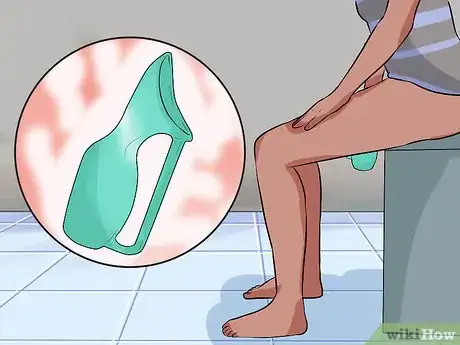

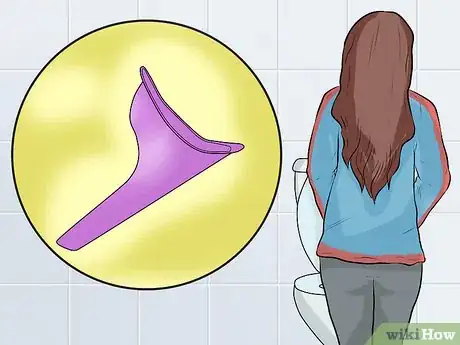


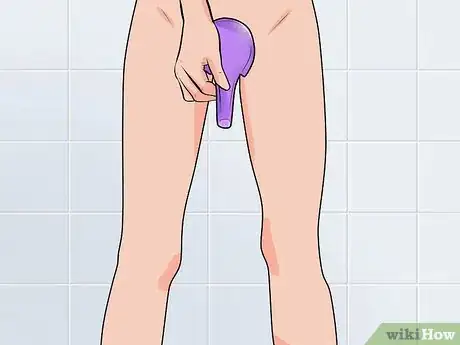
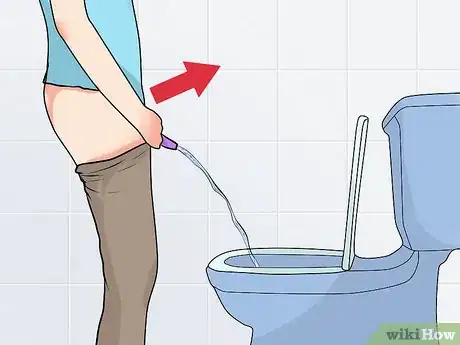
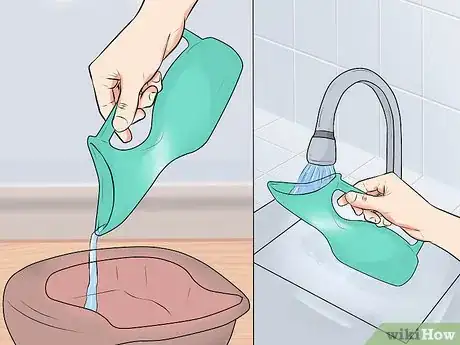



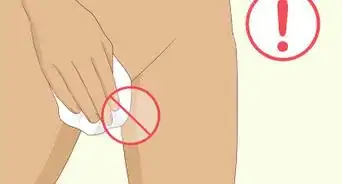






-Step-6.webp)
















































